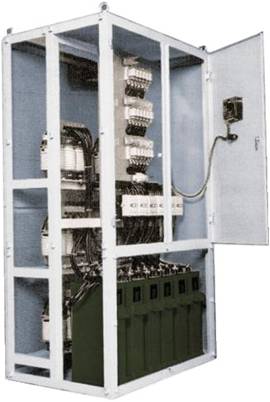Power Factor Correction (PFC)
Gedac Electric offers power factor correction solutions to assist customers to decrease power losses, reduce voltage losses and reduce electricity charges.
In an electric power system, a load with low power factor draws more current than a load with a high power factor for the same amount of useful power transferred. The higher currents increase the energy lost in the distribution system, and require larger wires and other equipment. Because of the costs of larger equipment and wasted energy, electrical utilities will usually charge a higher cost to industrial or commercial customers where there is a low power factor.
The Gedac Electric Power Factor Correction solution is designed to optimize the power factor during power system operation at heavy reactive power. The operation principle is based on measuring the power factor and the reactive power, the power factor correction brings the power factor of an AC power circuit closer to 1 by supplying reactive power of opposite sign, adding capacitors or inductors which act to cancel the inductive or capacitive effects of the load, respectively.
A Gedac Electric automatic power factor correction unit is used to improve power factor and the power factor correction unit usually consists of a number of capacitors that are switched by means of contactors. These contactors are controlled by a regulator that measures power factor in an electrical network.
Depending on the load and power factor of the network, a power factor controller will switch the necessary blocks or banks of capacitors in steps to make sure the power factor stays above a selected value (usually demanded by the energy supplier), say 0.9. Numerous banks of capacitors can be introduced and normally up to four capacitor banks can be controlled by a power factor controller.
The Gedac Electric designed solutions are suitable for all Power Factor Correction requirements and customers in the region.
Benefits:
- Removal of additional charges in electricity supply invoice
- Decrease of active power losses in the cables
- More power available at the secondary of transformers
- Reduction of voltage drops (increase of voltage at the end of the lines)



